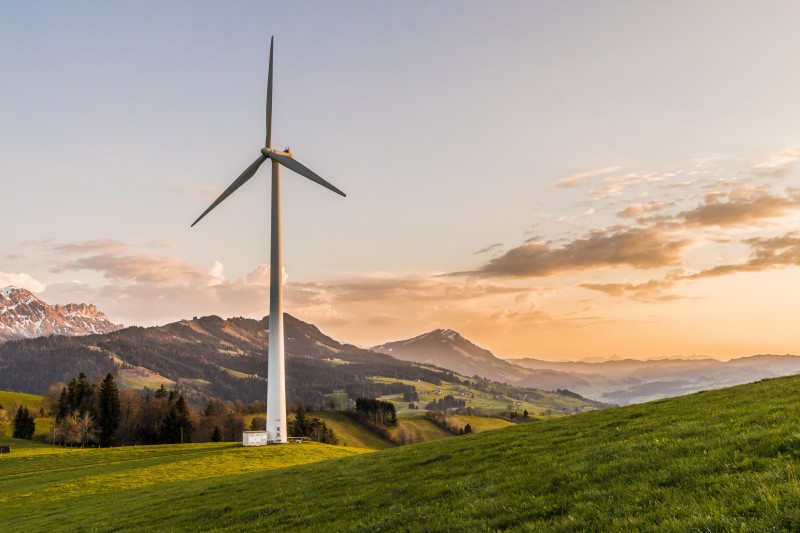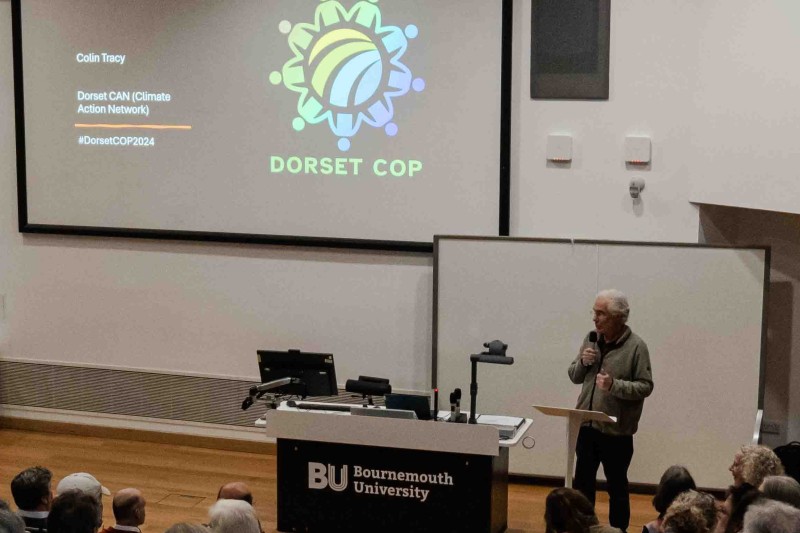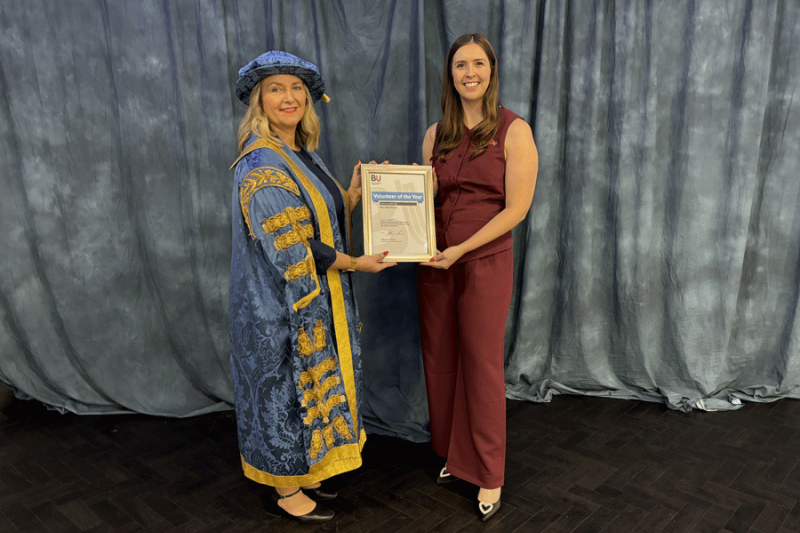Bournemouth University's Professor Rick Stafford argues that renewable energy targets do not go far enough to avoid climate breakdown and comprehensive Green New Deal and Nature-based Solutions approaches are urgently needed.
Boris Johnson’s announcement of wind power for all homes by 2030 is certainly a positive sign. Alongside some of the ‘Green Recovery Plans’ largely related to insulating buildings announced in the summer, this forms the basics of what is often considered a ‘Green New Deal’.
However, recent research, published this month in the journal Environmental Science and Policy by academics at Bournemouth University, Cardiff University and University College London show that these ‘basic’ Green New Deal (GND) plans will do very little to address the myriad of environmental concerns we currently face, including climate change.
The Green New Deal (GND) has many origins, such as the Leap manifesto from Canada, but really came to prominence when a bill was submitted for debate at the US Congress, led by Congresswoman Alexandria Ocasio-Cortez. The name comes from Franklin Roosevelt’s New Deal plan following the great depression in the USA in the 1930s. As with its namesake, the GND is partially about jobs and employment. It focuses on creating jobs in green industries, such as renewable energy or retrofitting energy saving features, such as insulation in houses, meaning carbon emissions will fall at the same time as creating jobs. In response to the economic crisis caused by the coronavirus pandemic, green recovery plans have been put into place by many countries, which utilise some of the key concepts of the GND.
Multiple versions of the GND have been proposed around the world; for example, the UK Labour Party proposed a ‘Green Industrial Revolution’ in their 2019 Manifesto, and there are proposals for a GND for Europe, which is easily confused with, but very different from, the EU Green Deal.
Our recent research published in Environmental Science and Policy uses a statistical model to examine the potential effectiveness of different suites of environmental policies in tackling climate change, biodiversity loss and pollution, and as such, their overall benefit to the environment. From our findings we identify these key features which any GND must include to provide real environmental benefits.
1. Investment in ‘Green’ jobs and industries
Green jobs provide a route for recovery from the current coronavirus induced economic crisis. They promote renewable energy solutions and energy efficiency, and provide a necessary initial pathway to reduce carbon emissions. However, by themselves, our model shows that resource consumption (raw materials and food) increase as a result of more money in the economy, and this offsets some of the environmental benefits. These measures alone will likely stabilise emissions, but will show little overall improvement.
2. Remove fossil fuel subsidies and create progressive green taxes
Alongside investment in green jobs and industries, which promote economic growth in some areas, reducing polluting subsidies and increasing green taxes reduces growth in other areas of the economy especially from some of the most polluting industries and corporations. Reducing the size of these industries creates immediate carbon and other environmental benefits. In addition, while social and economic inequality fall as a result of these measures, overall economic growth and average personal wealth stabilise, so resource consumption does not increase. The environmental benefits of such a Green New Deal scenario are therefore greatly improved over the basic proposals outlined in point 1 alone.
3. Include nature-based solutions
We often hear that planting trees can capture carbon from the air, but nature has a whole host of other habitats and species that capture carbon, increase biodiversity and remove pollution. Protecting peatlands, restoring seagrass and saltmarsh, and protecting existing habitats from destructive practices such as excessive logging or fishing using harmful methods, such as bottom trawling, in sensitive habitats are all policies which enhance nature-based solutions, along with increased tree planting.
Our research shows that nature-based solutions have relatively little effect on the socio-economic factors the above policies target. Many promote biodiversity, sequester carbon and remove pollution naturally, but they also play a role in aiding nature education initiatives, ultimately leading to reduction in demand for more harmful food production and land-management practices.
Because nature-based solutions produce similar outcomes, but through different processes to the socio-economic proposals of the Green New Deals outlined above, the two approaches work synergistically, and when combined produce a suite of policies which strongly address the three major environmental issues of pollution, biodiversity loss and climate change.

One important finding of our models is that pursuing economic growth weakens any policies in place to benefit the environment, even with policies such as nature-based solutions, which themselves do not affect the economy. Largely this is due to increases in resource use (raw materials and food) with more money in the economy. However, policies which stabilise the economy, with no clear drive to increase or decrease economic growth provide the necessary framework for green policies to work well.
It is important to realise that not everything labelled as a GND is equal. Many NGOs have plans for comprehensive GNDs, and many score well on many of the features or criteria above. Equally there are many proposals using GND terminology, especially by governments, which do not address these criteria adequately and won’t produce the necessary environmental benefits to deal with the urgent issues of climate change and biodiversity loss. For example, Joe Biden’s Clean Energy Revolution places strong emphasis on green growth, but is far weaker on fossil fuel subsidies and green taxation, and likely to be ineffective unless further measures are put in place.
The ‘winner’ in our ranking of GNDs was from the UK Green New Deal Group as their proposal, which was submitted to parliament as the Decarbonisation and Economic Strategy Bill in 2019 included nature-based solutions as a prominent feature, as well as green technology, tax and subsidy reform and did not prioritise economic growth.
The recovery of the world’s economies from the pandemic provides an opportunity that we must grasp to address the growing and increasingly apparent impacts of climate change and biodiversity loss. Our analysis indicates that moving on from our focus on economic growth towards a more progressive GND that incorporates the other features could provide a crucial way forward.
Rick Stafford is Professor of Marine Biology and Conservation at Bournemouth University and Acting Head of Department of Life and Environmental Sciences.



